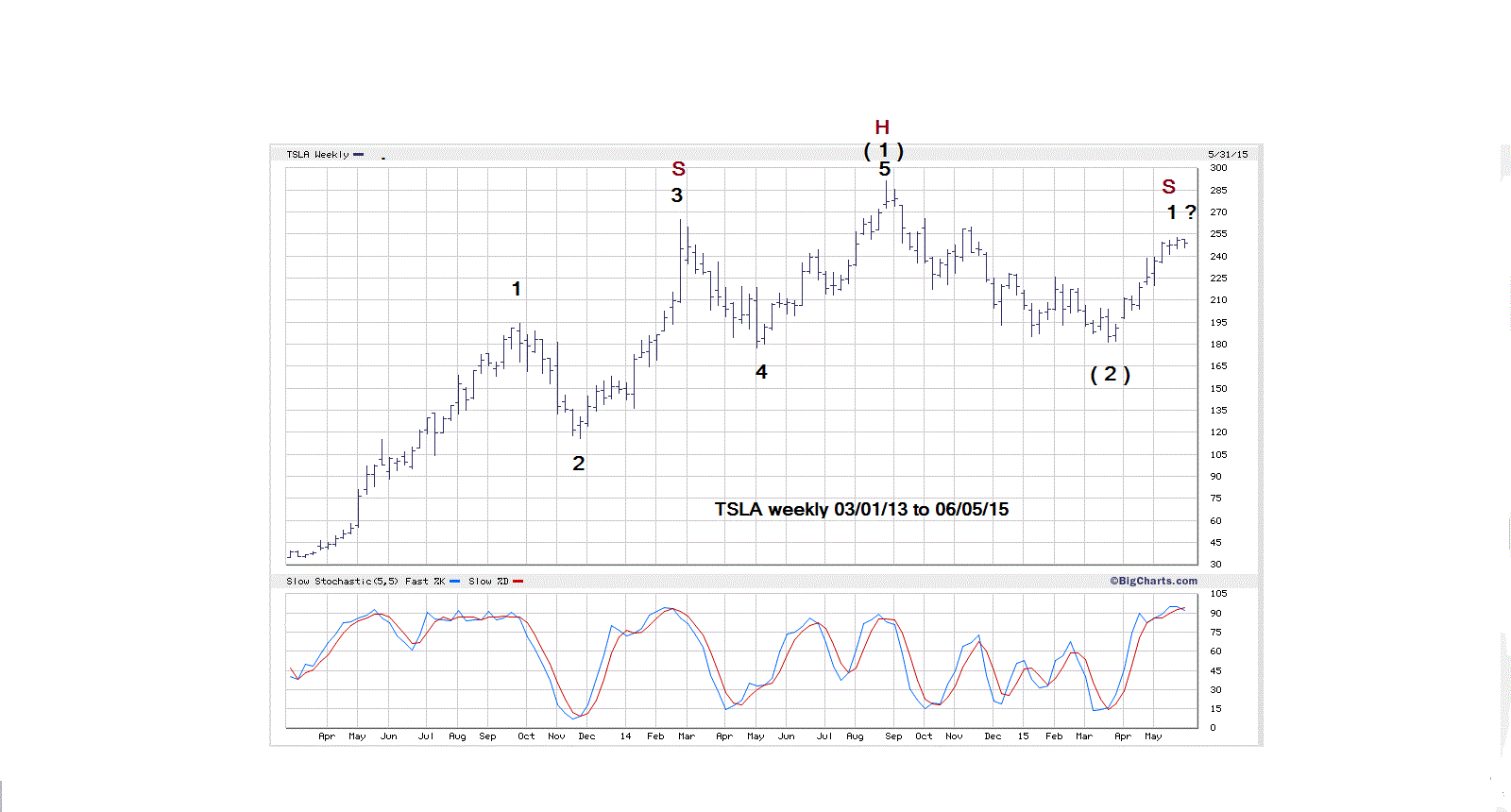Since early 2015 the US stock market has been struggling to make marginal gains.
Viewed strictly from the perspective of technical analysis there have been many bearish signals. Momentum indicators on the S&P 500 (SPX) specifically the RSI have been showing bearish divergences. Stocks making 52 week highs had a significant bearish divergence when the SPX made its high on May 20th 2015.
June through October is a seasonally bearish time for stocks. Probabilities favor at least a correction of 10% which may have already started.
Is this a time to be buying stocks? Absolutely not! If the stock market is in a correction the vast majority of stocks will decline with the broader market. It is however a great time to be watching for stocks that could decline the least relative to the market.
One stock that needs to be watched closely is Tesla Motors (TSLA)
Fundamentals and Technical Situation
TSLA designs, develops, manufactures and sells electric vehicles. They also make stationary energy storage systems. Since its founding in 2003 TSLA has earned a profit in just one three month period. In 2014 they lost $294 million on $3.2 billion revenue. Worst of all TSLA doesn’t expect to earn a full year profit until 2020. The technical outlook, at least from one possible price pattern is very bearish.
Please see the weekly TSLA chart from March 1, 2013 to June 5, 2015.

The Stock appears to have formed a near text book Head and Shoulders pattern, with the left shoulder at the February 2014 peak. The head is the August 2014 peak and the rally in June 2015 forming what could be the right shoulder. If the 258.75 high made on June 8, 2015 holds, a decline to at least the 160 area is possible.
Underneath the surface
A company that has hardly ever shown a profit, no near term hope of profitability combined with a classic Head and Shoulders price pattern would seem to be an ideal stock to short.
Except if you look underneath the surface. TSLA short interest as a percentage of its float is HUGE! A staggering 25.74% of the shares available to trade is held by short sellers. Most stocks short interest as a percentage of float is in the low single digits.
If you want to short TSLA- it’s a crowded trade. Think of each share short as potential buying fuel. Every short seller at some point will have to close out the trade with a buy order.
What about the obvious, perhaps too obvious Head and Shoulders pattern? While many investors and traders are familiar with this classic formation, far fewer have knowledge of Elliott Wave patterns. Note on the weekly TSLA chart there is a clear five waves up to the all time high. In Elliott analysis five waves up usually constitutes the first wave of a larger five wave pattern.
The subsequent decline from the all time high counts best as seven waves, which are corrective of the previous five waves up. The decline terminated at 181.40 which is near the bottom of the supposed wave four made in April 2014. In Elliott analysis corrective waves typically bottom in the area of the fourth wave of one less degree.
The conclusion of the Elliott analysis is that the bottom made in March 2015 will hold and the subsequent rally into June is just the beginning of the next five waves up, leading to a break above the current all time high at 291.42.
Plan of action
First, do not short TSLA! Even if the broader stock market does have at least a 10% decline, TSLA could continue to go up in spite of any market drop. This has already happened, since May 20th the SPX is down 2.1% TSLA is up 4.8%.
If TSLA can pull back from its close on June 8th at 256.29 there are two factors we need to watch. The first is the short interest as a percentage of the float. If it was to decline significantly, say into the mid teens it would indicate the bullish “fuel” is lessening.
Second the weekly Slow Stochastic would have to come down. In particular the %d line would need to reach at least 30. Please see the weekly TSLA chart. If TSLA does decline it could find support 235 to 220 area.
Successful hunters are patient and wait for the right moment to strike. If TSLA declines with the Weekly Slow stochastic at least near oversold and a high short interest relative to the float, go long TSLA. There are no certainties only probabilities, successful traders like successful hunters wait until the probabilities are in their favor.

















